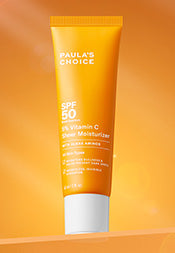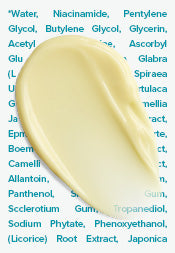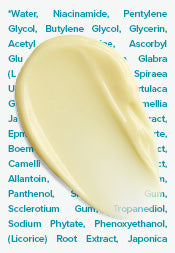Types of Acne Breakouts
Acne is a skin condition that occurs when your poreshair follicles become clogged with oil and dead skin cells, and it affects people of all ages — from teenagers to adults. Whether your skin has several white bumps or red pimples, or your nose is dotted with blackheads, you want to get rid of them as quickly as possible! However, to win the battle against acne, you must first know what type of breakout you have. Only then can you start using the best acne products to improve your skin—and there are research-proven options that deliver impressive results when used consistently.
Here are the most common types of acne breakouts that teens and adults tend to get:
Blackheads (Open Comedones)
A blackhead is also known as an open comedone. Technically, it’s not acne, but rather a type of clogged pore that can occur on its own or along with acne. Despite their appearance, blackheads aren’t due to the skin being dirty. Blackheads form when dead skin cells mix with excess oil and debris in the pore lining. Once the oil mix reaches the opening of the pore (at skin’s surface), it oxidises, turning them black.
A leave-on BHA exfoliant is the most important product for getting rid of blackheads. Try our global best sellersing SKIN PERFECTING 2% BHA Liquid Exfoliant or RESIST Daily Pore-Refining Treatment 2% BHA to see the most effective results.
White Bumps (Closed Comedones)
Tiny white bumps on skin are another type of clogged pores. They’re sometimes referred to as closed comedones because unlike blackheads, the head of the white bump is covered by a thin layer of skin and the contents aren’t exposed to the air so they don’t oxidise and turn black. These white bumps can show up anywhere on the face, but occur most often on the forehead, cheeks, and under-eye area.
Regular Pimples (Papules)
Papules are the most common type of pimples, and what most people tend to think of as acne or describe as “zits.” These small to medium-size pimples look pink to slightly red, have a soft surface, and are filled with fluid and excess oil. They can also feel a bit sore when they are touched.from a simple touch.
Papules are the easiest type of acne to manage. A combination of a gentle cleanser for acne-prone skin, an over-the-counter product with benzoyl peroxide, and a leave-on salicylic acid (BHA) exfoliant usually does the trick, and the exfoliant works wonders for clogged pores.
Large Pimples (Pustules)
Pustules are what occur when papules — the mild type of acne — worsen. The initial pimple becomes larger, engorged with more oil and fluid as the skin attempts to deal with the problem on its own. Most teens with acne have a mix of papules and pustules.
Although pustular acne can respond well to over-the-counter acne products, this type of acne might also require prescription products that only a dermatologist can provide. Examples of prescription products that might help include several retinoids. If your dermatologist prescribes a retinoid, keep in mind that you might need to experiment with a few before finding the one that works best for your skin.
Deep Pimples (Nodular Acne)
Deep pimples are the most severe type of acne, and the most difficult type to manage. Rather than being small and red, these pimples tend to feel like large and hardened lumps. With this type of acne, you often feel it before you see it and it doesn’t feel good!
Left untreated, this type of bad acne can cause permanent damage to skin. Given that fact and the likelihood of minimal results from anti-acne skincare alone, nodular acne requires the care of a dermatologist so don’t hesitate to contact one if this fits the description of your acne.
All of the above types of acne breakouts can also be part of back acne, sometimes referred to as “bacne”, which can also show up on the chest occasionally.
Learn more about acne breakouts.
References for this information:
Journal of Drugs in Dermatology, January 2016 Supplement, pages S11–S16
The Journal of Clinical and Aesthetic Dermatology, September 2015, pages 27–35; and May 2012, pages 32–40
Experimental Dermatology, October 2009, pages 821–832
Journal of the Indian Medical Association, April 2009, pages 219–222
Cutis, January 2008, pages 81–86
Archives of Pediatrics, September 2007, pages 1152–1156
International Journal of Cosmetic Science, June 2004, pages 129–138











